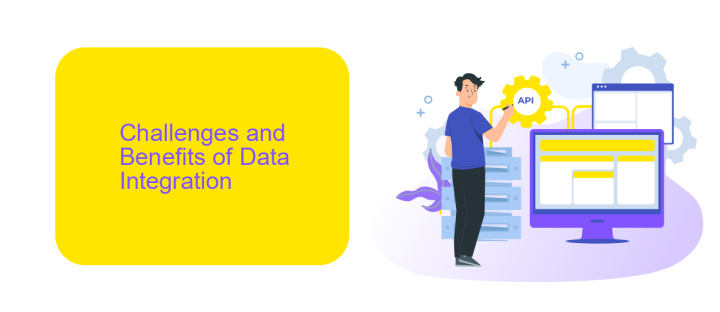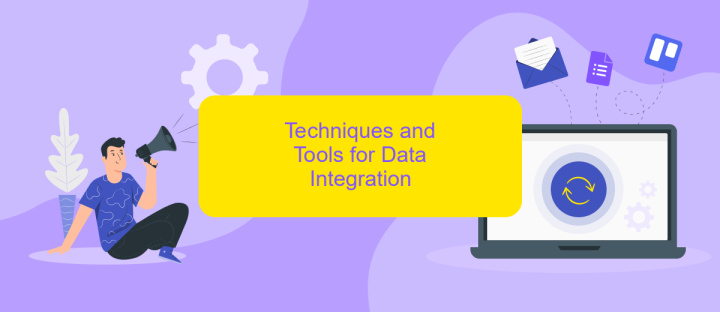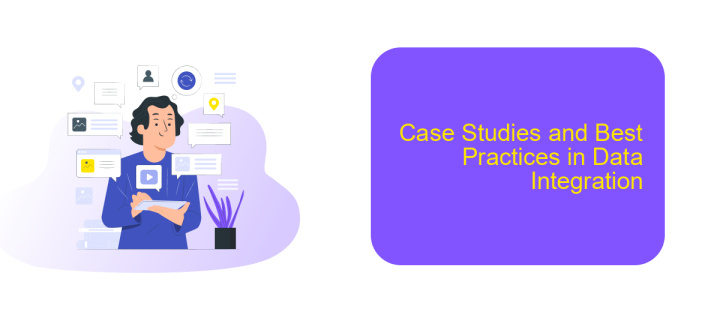Data Integration Articles
Data integration is a critical component in today's data-driven world, enabling seamless connectivity and interoperability between disparate systems. By effectively combining data from various sources, organizations can achieve a unified view of information, driving informed decision-making and operational efficiency. This article explores the key concepts, methodologies, and best practices in data integration, providing valuable insights for businesses looking to optimize their data management strategies.
Introduction to Data Integration
Data integration is a crucial process in modern data management, enabling seamless connectivity and communication between disparate systems and applications. By consolidating data from various sources, organizations can achieve a unified view, which is essential for accurate analysis and decision-making.
- Combines data from multiple sources
- Enhances data accuracy and consistency
- Improves operational efficiency
- Facilitates better decision-making
One of the key tools in the realm of data integration is ApiX-Drive. This service simplifies the process of connecting different applications and automating data flows without the need for extensive coding. ApiX-Drive supports a wide range of integrations, making it easier for businesses to streamline their operations and maintain data integrity across platforms. By leveraging such tools, organizations can significantly reduce the complexity and time associated with manual data handling.
Challenges and Benefits of Data Integration

Data integration presents several challenges, including data quality issues, disparate data sources, and complex data formats. Ensuring the accuracy and consistency of data from various sources can be difficult, often requiring extensive cleaning and transformation. Additionally, integrating data from different systems, such as on-premises databases and cloud-based applications, can pose compatibility issues. The complexity of aligning data formats and structures adds another layer of difficulty, making the integration process time-consuming and resource-intensive.
Despite these challenges, the benefits of data integration are substantial. Effective data integration provides a unified view of information, enabling better decision-making and streamlined operations. It enhances data accessibility and usability, allowing organizations to leverage comprehensive insights. Tools like ApiX-Drive simplify the integration process by automating data synchronization between multiple platforms, reducing manual efforts and minimizing errors. By overcoming integration hurdles, businesses can achieve greater efficiency, improved data accuracy, and a competitive edge.
Techniques and Tools for Data Integration

Data integration involves combining data from different sources to provide a unified view. This process is essential for businesses to make informed decisions and improve operational efficiency. There are several techniques and tools available to achieve effective data integration.
- ETL (Extract, Transform, Load): This traditional method involves extracting data from various sources, transforming it into a suitable format, and loading it into a destination system.
- API Integration: Using APIs to connect different systems allows for real-time data exchange and synchronization. ApiX-Drive is a useful service that simplifies the setup of API integrations without requiring extensive coding knowledge.
- Data Virtualization: This technique allows users to access and query data without needing to know its physical location or format, providing a seamless view of the integrated data.
- Data Warehousing: This involves collecting and managing data from various sources in a centralized repository to support analysis and reporting.
Choosing the right technique and tool depends on the specific needs and infrastructure of the organization. For instance, ApiX-Drive can be particularly beneficial for businesses looking to implement API integrations quickly and efficiently. By leveraging these methods, companies can ensure their data is accurate, accessible, and actionable.
Case Studies and Best Practices in Data Integration

Successful data integration is crucial for businesses aiming to streamline operations and enhance decision-making. One notable case study involves a retail company that integrated its sales, inventory, and customer data across multiple platforms using ApiX-Drive. This integration allowed for real-time data synchronization, reducing manual errors and providing valuable insights into consumer behavior.
Another example is a healthcare provider that utilized data integration to consolidate patient records from various sources. By employing best practices such as data cleansing and standardized formats, they achieved a unified view of patient information, improving the quality of care and operational efficiency.
- Ensure data quality through regular cleansing and validation.
- Use standardized data formats for easier integration and analysis.
- Leverage automation tools like ApiX-Drive for seamless data synchronization.
- Implement robust security measures to protect sensitive data.
Incorporating these best practices can significantly enhance the effectiveness of your data integration efforts. Tools like ApiX-Drive offer automated solutions that simplify the process, enabling businesses to focus on leveraging their integrated data for strategic advantages.


Future Trends in Data Integration
The future of data integration is set to be shaped by advancements in artificial intelligence and machine learning. These technologies will enable more intelligent and automated data integration processes, reducing the need for manual intervention and increasing accuracy. Additionally, the rise of real-time data integration will become more prominent, allowing businesses to make faster and more informed decisions. This shift is crucial for industries where timely data is essential, such as finance and healthcare.
Another significant trend is the growing importance of cloud-based integration platforms. Services like ApiX-Drive are leading the way by offering seamless and efficient integration solutions that connect various applications and data sources. These platforms provide a user-friendly interface and powerful tools to automate workflows, making it easier for businesses to manage their data. As more organizations move to the cloud, the demand for such integration services will continue to rise, driving innovation and further simplifying the data integration landscape.
FAQ
What is data integration?
Why is data integration important for businesses?
What are common challenges in data integration?
How can businesses automate data integration processes?
What are the benefits of using data integration tools?
Routine tasks take a lot of time from employees? Do they burn out, do not have enough working day for the main duties and important things? Do you understand that the only way out of this situation in modern realities is automation? Try Apix-Drive for free and make sure that the online connector in 5 minutes of setting up integration will remove a significant part of the routine from your life and free up time for you and your employees.

